The 1st Battalion Somerset Light Infantry, or The Somersets, as they were commonly known, were an Old Contemptible Battalion that were present at most of the significant events on the Western Front but who seem to have left behind few reminders of their time there. The few accounts of their actions that were produced have been out of print for some time and there are no memorials linked to them on the Western Front, save for the Braithwaite memorial at Serre, which fell over a couple of years ago in what was a low point in terms of visible reminders of their time at the front but which has since been repaired.
The Centenary has brought a few accounts to light and there is currently an excellent exhibition at the Somerset Museum in Taunton with diaries, and photo albums that I at least had not seen before. It is the Returned project that helps us tell a narrative of the Battalion from 1914-1917 with tangible evidence of three of the most significant men linked to the Battalion. Capt CC Maud, Val Braithwaite and Lt Col Prideaux, men who were often mentioned in the War Diary I tweet almost daily as @thesomersets and who are remembered in those accounts that have survived as some the best officers the Battalion had. Living near Mells, which has two beautiful examples (here) I have been thrilled to see three men I have read about remembered as part of the project. That you can tell the story of a single Battalion using the reports shows how successful the project has been. One of the markers is described as not accessible to the public and the other is in West Susssex, not an area generally associated with the Regiment. It is therefore unlikely I would have been able to see them without them being brought together as part of the project.
The Retreat from Mons, Prowse Point, the Birdcage and the Christmas Truce – Capt CC Maud.
I covered the events of autumn 1914 in some detail in my blog so some links are included in this article. Arriving in France in time to retreat headlong towards Paris before an abrupt U-turn the meant that Battalion found itself in Ploegsteert by October 1914. They were involved in a number of actions as trench warfare emerged as the main feature of the conflict. Sgt William Archer won his DSO for a bayonet charge that helped free a number of Inniskilling Fusilers and the area as whole was named Prowse Point after the actions of the Battalion CO CB Prowse. Read more here about this period and Brigadier General CB Prowse, who later was the most senior British officer killed on the first day of The Somme.
Medals won by Sgt William Archer:

On December 19th 1914 the Battalion took part on an attack on the heavily defended German position near St Yves known as the Birdcage – carrying mattresses to enable the men to climb over the barbed wire this early example of going “Over the Top” attack was a dismal failure – one of the casualties was Capt CC Maud. His temporary marker is now in the Somerset Museum in Taunton but he would not have a marker if it had not been for the Christmas Truce – his body was one of those recovered and buried on Christmas Day 1914. My article on the Truce is here and the report from The Returned on his marker can be found here. During the truce a German, rather than a British, soldier returned his body as he had come closest to their trenches. His bravery during the attack on the 19th was commented on by the Germans when they returned his body and you can read and listen to more about Capt Maud here as part of the BBC World War One at Home project.
Lt. Val Braithwaite – 1st July 1916
The events of 1st July 1916 are well known and the fate suffered by the Battalion mirrored that of all the front line Battalions. Attacking Redan Ridge at Serre they were at the north end of the British line next to the better known Pal’s Battalions, their failure added to the difficulties the Somersets faced as they were exposed to fire on their left flank in addition to the challenges caused by the failure of the bombardment. Within minutes of going over the top nearly all the Officers, including Val Braithwaite, were gone. The only first-hand account left of the fighting of that day as it relates to the Battalion is that of Sgt Arthur Cook who left a vivid account of his 12 hours between the lines, describing the area as more fit for devils than humans. Cook survived the war and became Yeoman Warder of the Tower of London, his medals are in the Somerset Museum and his diary is the best first-hand account of the actions of the Battalion from 1914-1918.
Val Braithwaite had joined the Battalion in September 1914 and won the MC for his part in the actions in October of that year. A Company CO there is a trench map with his name on in the war diary. The grave marker in Winchester Cathedral (report here) does not mark his grave, but rather was the original marker that was later replaced by the memorial that currently stands outside Serre Road No.2 cemetery. It was not for want of trying that there is no known grave, his father, General Sir Walter Braithwaite, senior British officer at Gallipoli, “walked the battlefield” after the German withdrawal looking for his son but to no avail.
Below – a trench map from the War Diary showing the position held by A Company of the Somersets near Ploegsteert in October 1914 – Val Braithwaite’s name is in the bottom right hand corner.
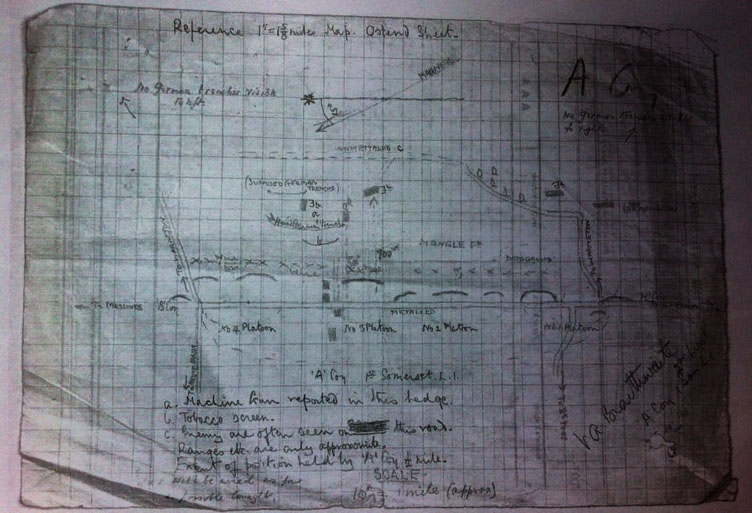
Brigade Major – Capt G. A. Prideaux.
After the losses of the Somme the Battlion was moved north to Sanctuary Wood, beloved of modern school trips but described a grisly place even by those who were veterans of the Somme. Gassed during a relief the Battalion did not take part in any more offensive operations for the rest of 1916 and into early 1917, but this did not mean that the losses stopped. The hazards of day-to-day life in the trenches are well known and account for the loss of Capt Prideaux.
On Jan 19th 1917 Capt Prideaux was visiting the front line when he was killed by a burst of shell-fire. The regimental history notes, “the loss of this gallant young officer, who had seen all his military service with the Somerset Light Infantry since was gazetted in 1911, was keenly felt by the Regiment” and maybe this explains the care that that was then taken to produce such a beautiful temporary marker – the report can be found here. Arthur Cook mentions him fondly in his account and you can see his name in a diary kept by Lt Dodington, on display at the Somerset Museum, in an extract that describes life in Ploegsteert in early 1915, Dodington was one of many officers killed on the first day of the Somme. With the death of Capt Prideaux it appears the last of the Old Contemptible officers are gone: dead, wounded, prisoner or with other Battalions and the war diary loses some of the sense of narrative it had held since August 1914, a fitting third and final marker.
The diary extract mentioning Capt Prideaux. (top right)
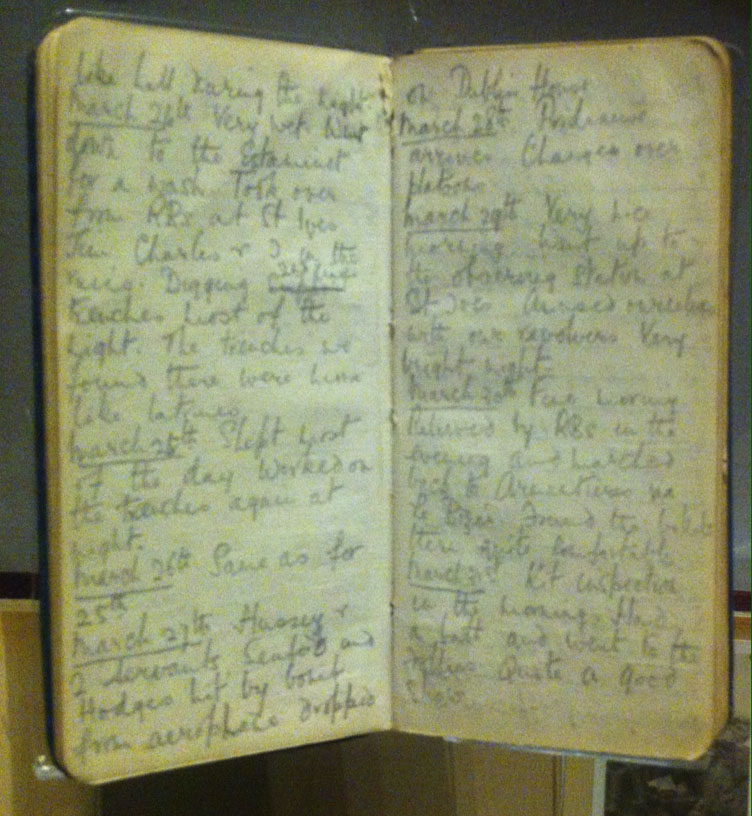
James McArthur @thesomersets
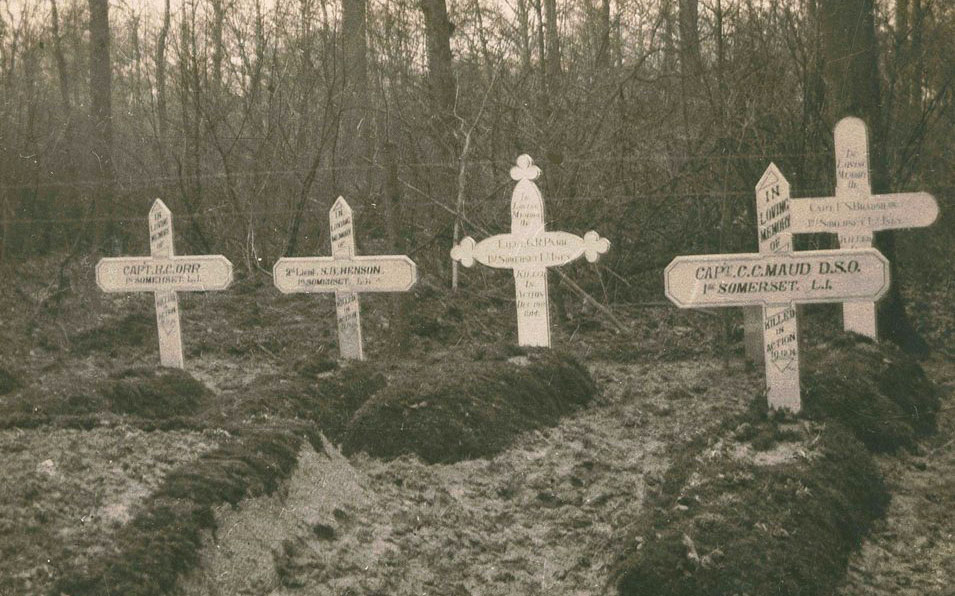
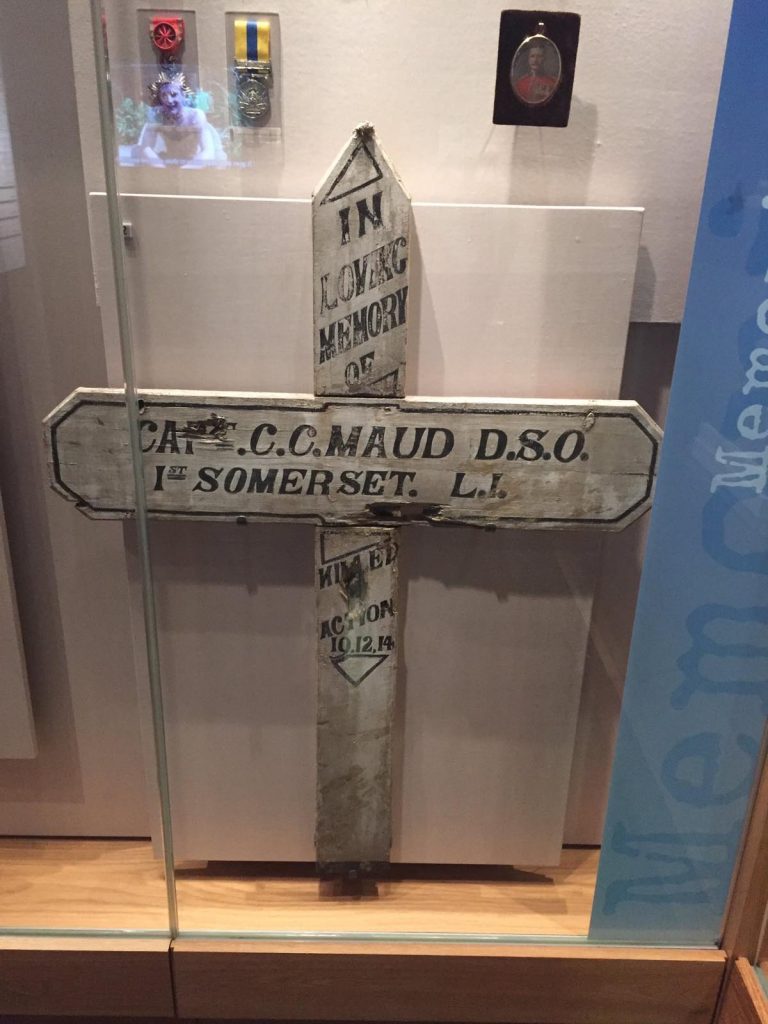
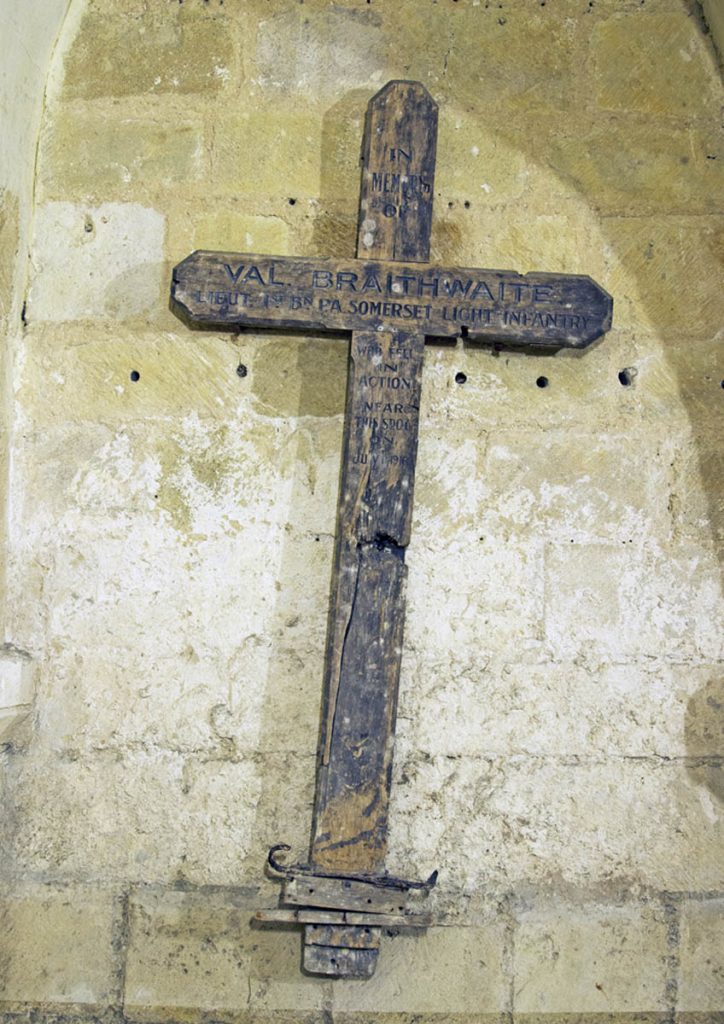
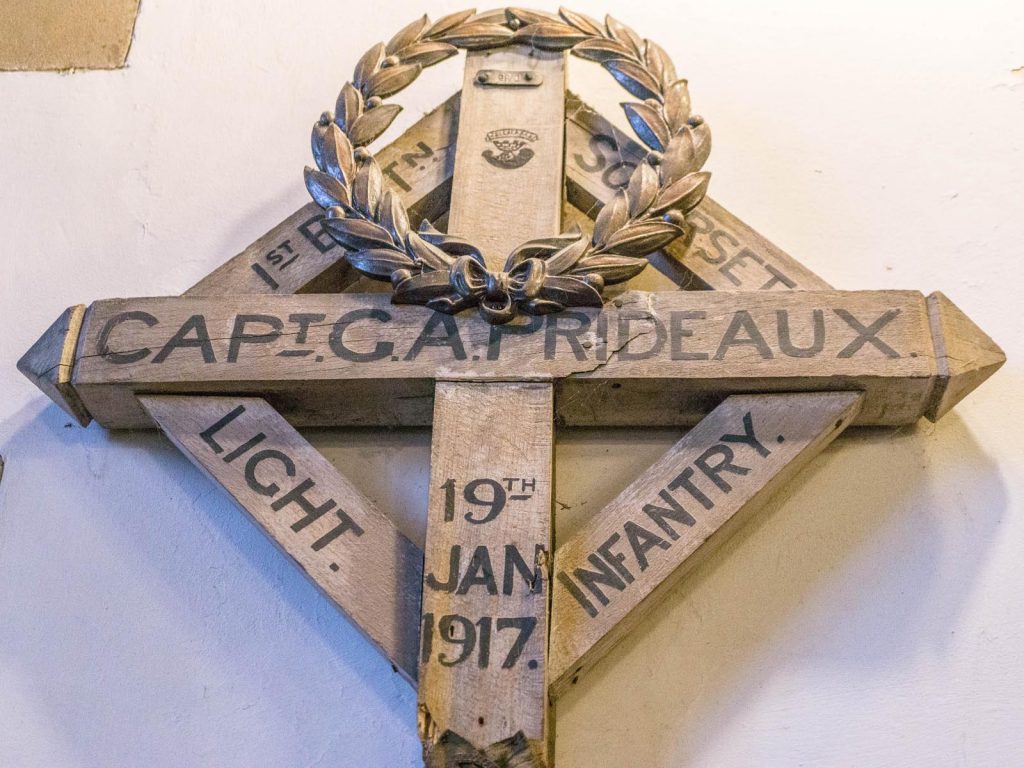
Hi There, I am sitting in a hotel in Ypres completing a promise to my Father re his Grand father Corporate TG Hazzard 25544, and was wondering if you have any details I could look up on him re a family history, all I know is hi died Oct 4th 1917 so I assume in the Broodseinde offensive, his is believed to be an Unknown /missing, but is on the Tyne cot plaque no 41/42